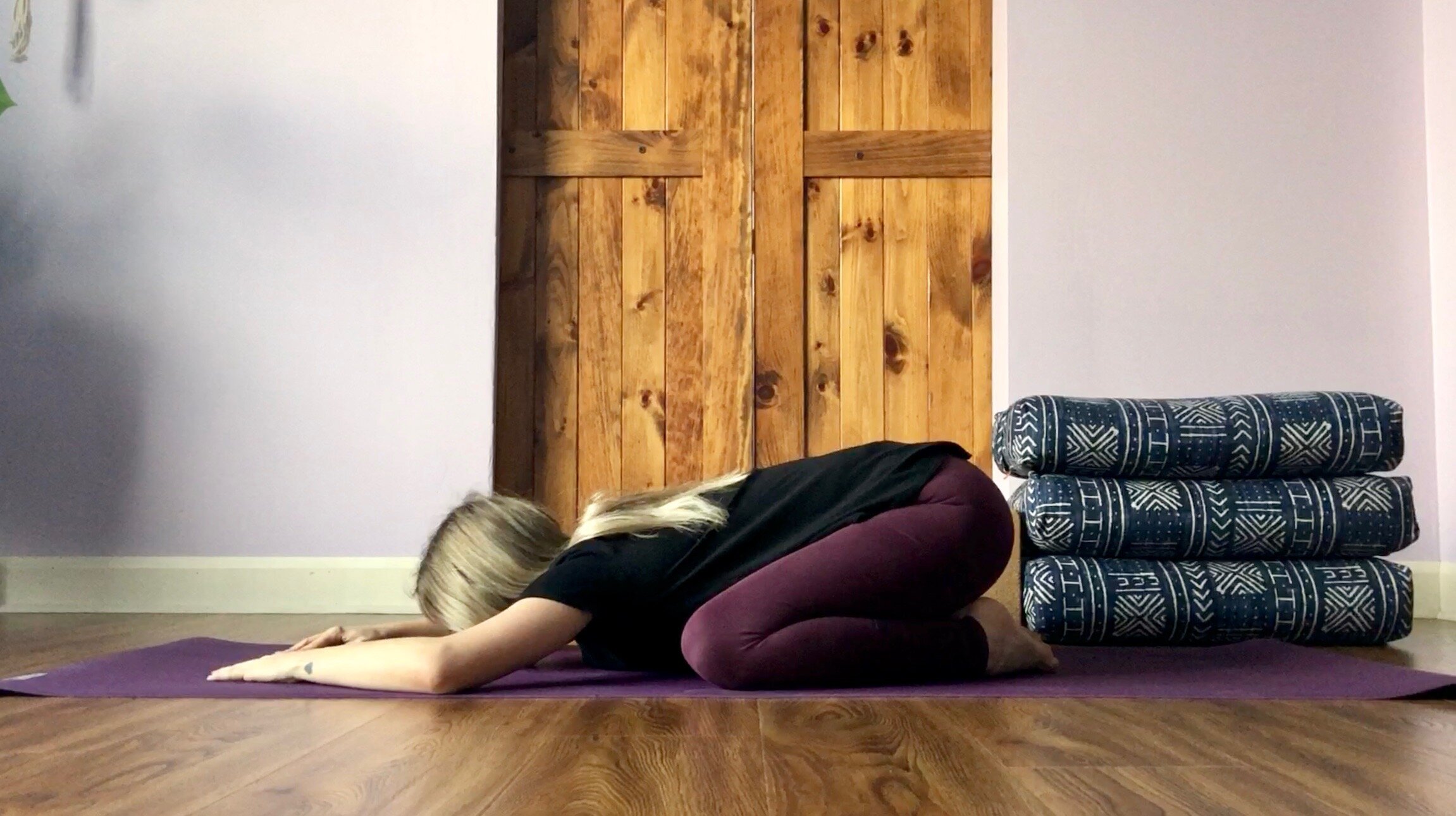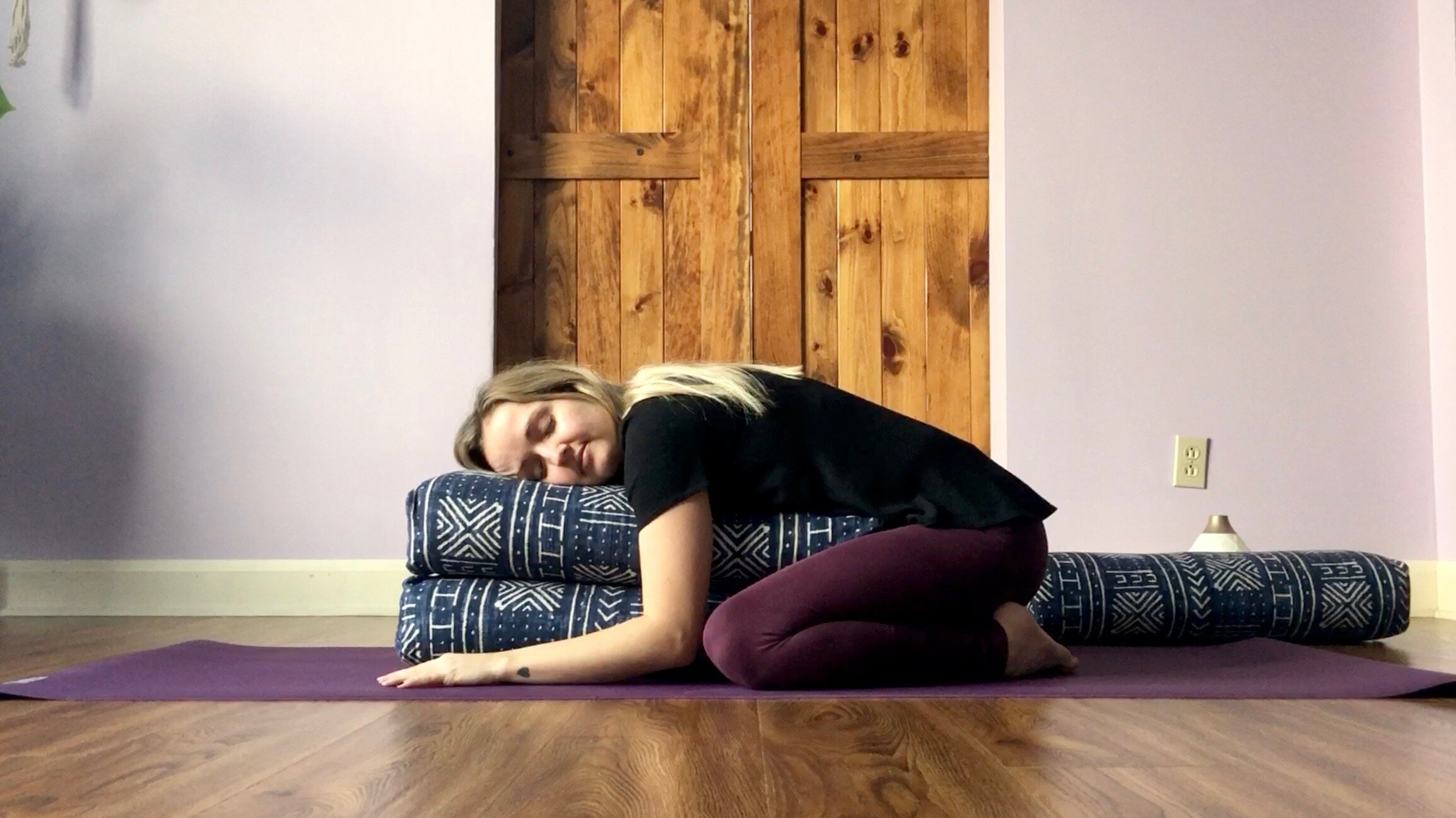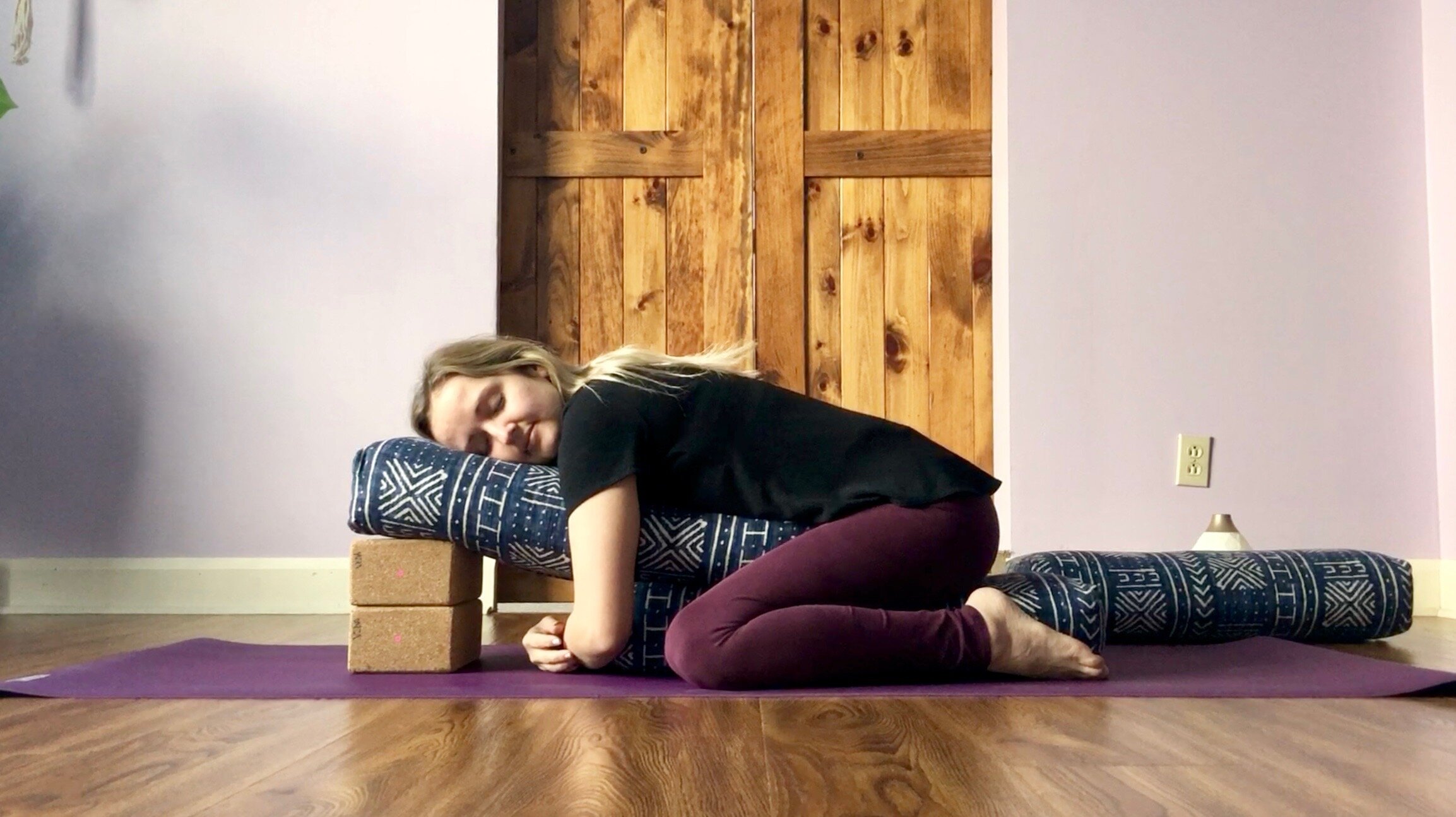Making Child's Pose Comfortable
I’m guilty of saying it, well I’m guilty of believing it at some point….child’s pose, one of our true resting poses; a pose where you can completely let go and feel relaxed. BUT, what if it doesn’t feel good? What if you don’t feel relaxed in Child’s pose? Does that mean you will never feel truly rested in this pose?! Not at all! The beautiful thing about yoga is that we adjust the pose to fit your body, not the other way around.
I want to look at a few ways here that you can prop up your child’s pose, work with the one that feels best for you - and add or take away props as needed.
Props
2 or 3 bolsters (or large pillows)
2 blocks
Unsupported Child’s Pose. Knees are wide to about mat distance, and big toes come to touch. Belly and chest melt down towards the mat, arms are relaxed. Chin, forehead, or one ear can rest to the mat.
Unsupported Child’s Pose. Legs are kept together, this can sometimes feel more supported with the belly and chest resting on the thighs. Forehead resting down on the mat with the arms resting to the side of the body.
Supported Child’s Pose with one bolster. Knees wide, and big toes come to touch. Belly, chest and head rest down onto the bolster.
Supported Child’s Pose with two bolsters. Knees are wide, and big toes come to touch. Belly, chest and head rest down onto two bolsters.
Supported Child’s Pose with two bolsters and two blocks. One bolster used to sit on, the second bolster is used for support for the belly, chest and head. The two blocks are used to give height to that second bolster.
Supported Child’s Pose with a ramp. This allows a lift in the upper body, while still allowing the glutes to sink down towards the mat. Two blocks and one bolster to create the ramp, and you can adjust the blocks to play with finding the right height.
Supported Child’s Pose with ramp and seat. This support allows for the chest to be slightly more elevated, but still has support for the glutes. Two bolsters and two blocks used.
I hope this gives you a little more hope and inspiration for child’s pose. It is a pose that I love exploring with clients, because everyone finds comfort with a slightly different variation.
Have you found a different way of using props that works for you? Let me know! I would love to add it to my toolbox of Child’s Poses.
Namaste,
Sophie.







